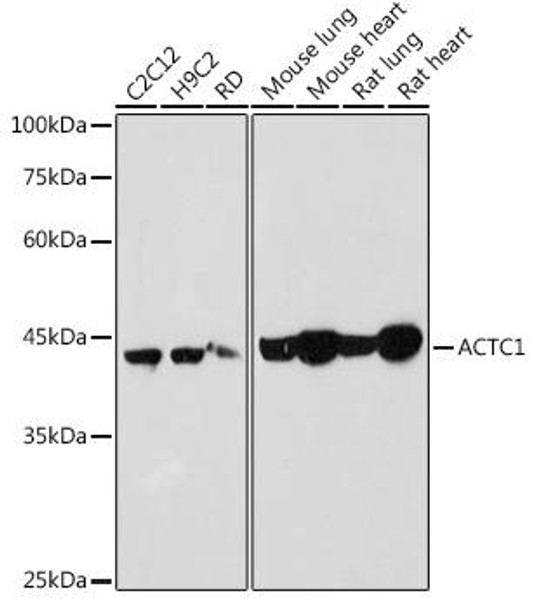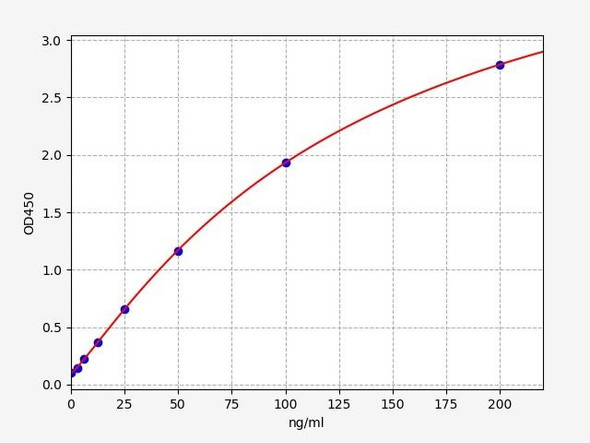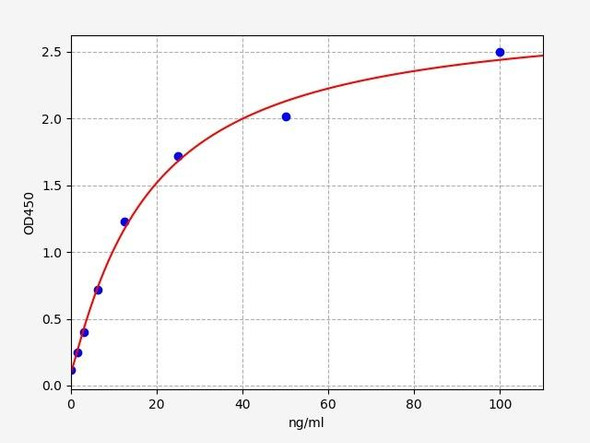Anti-ACTC1 Antibody (CAB6507)
- SKU:
- CAB6507
- Product Type:
- Antibody
- Antibody Type:
- Polyclonal Antibody
- Reactivity:
- Human
- Mouse
- Rat
- Host Species:
- Rabbit
- Isotype:
- IgG
- Synonyms:
- ACTC1
- ACTC
- ASD5
- CMD1R
- CMH11
- LVNC4
- actin
Frequently bought together:
Description
| Product Name: | ACTC1 Rabbit pAb |
| Product Code: | CAB6507 |
| Size: | 100uL |
| Synonyms: | ACTC1, ACTC, ASD5, CMD1R, CMH11, LVNC4, actin |
| Applications: | WB, IHC |
| Reactivity: | Human, Mouse, Rat |
| Host Species: | Rabbit |
| Immunogen: | Recombinant protein of human ACTC1. |
| Applications: | WB, IHC |
| Recommended Dilutions: | WB 1:500 - 1:2000 IHC 1:50 - 1:200 |
| Reactivity: | Human, Mouse, Rat |
| Positive Samples: | C2C12, H9C2, RD, Mouse lung, Mouse heart, Rat lung, Rat heart |
| Immunogen: | Recombinant protein of human ACTC1. |
| Purification Method: | Affinity purification |
| Storage: | Store at 4°C. Avoid freeze / thaw cycles. Buffer: PBS with 0.02% sodium azide, pH7.3. |
| Isotype: | IgG |
| Sequence: | Email for sequence |
| Gene ID: | 70 |
| Uniprot: | P68032 |
| Cellular Location: | Cytoplasm, cytoskeleton |
| Calculated MW: | 42kDa |
| Observed MW: | 42KDa |
| UniProt Protein Function: | ACTC1: Actins are highly conserved proteins that are involved in various types of cell motility and are ubiquitously expressed in all eukaryotic cells. Polymerization of globular actin (G-actin) leads to a structural filament (F-actin) in the form of a two-stranded helix. Each actin can bind to 4 others. Belongs to the actin family. |
| UniProt Protein Details: | Protein type:Cytoskeletal; Contractile; Cell development/differentiation; Motility/polarity/chemotaxis; Myosin-binding Chromosomal Location of Human Ortholog: 15q14 Cellular Component: actin filament; cytoplasm; cytosol; extracellular space; filopodium; focal adhesion; I band; lamellipodium; membrane; sarcomere Molecular Function:ATP binding; ATPase activity; myosin binding Biological Process: actin filament-based movement; actin-myosin filament sliding; actomyosin structure organization and biogenesis; apoptosis; cardiac muscle morphogensis; cardiac myofibril assembly; heart contraction; muscle filament sliding; muscle thin filament assembly Disease: Atrial Septal Defect 5; Cardiomyopathy, Dilated, 1r; Cardiomyopathy, Familial Hypertrophic, 11 |
| NCBI Summary: | Actins are highly conserved proteins that are involved in various types of cell motility. Polymerization of globular actin (G-actin) leads to a structural filament (F-actin) in the form of a two-stranded helix. Each actin can bind to four others. The protein encoded by this gene belongs to the actin family which is comprised of three main groups of actin isoforms, alpha, beta, and gamma. The alpha actins are found in muscle tissues and are a major constituent of the contractile apparatus. Defects in this gene have been associated with idiopathic dilated cardiomyopathy (IDC) and familial hypertrophic cardiomyopathy (FHC). [provided by RefSeq, Jul 2008] |
| UniProt Code: | P68032 |
| NCBI GenInfo Identifier: | 54036697 |
| NCBI Gene ID: | 70 |
| NCBI Accession: | P68032.1 |
| UniProt Secondary Accession: | P68032,P04270, |
| UniProt Related Accession: | P68032 |
| Molecular Weight: | 42,019 Da |
| NCBI Full Name: | Actin, alpha cardiac muscle 1 |
| NCBI Synonym Full Names: | actin, alpha, cardiac muscle 1 |
| NCBI Official Symbol: | ACTC1 |
| NCBI Official Synonym Symbols: | ACTC; ASD5; CMD1R; CMH11; LVNC4 |
| NCBI Protein Information: | actin, alpha cardiac muscle 1 |
| UniProt Protein Name: | Actin, alpha cardiac muscle 1 |
| UniProt Synonym Protein Names: | Alpha-cardiac actin |
| Protein Family: | Actin |
| UniProt Gene Name: | ACTC1 |
| UniProt Entry Name: | ACTC_HUMAN |





